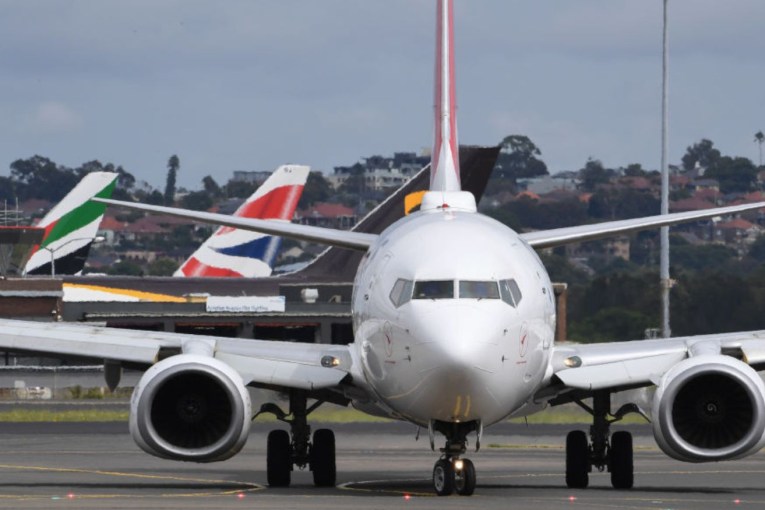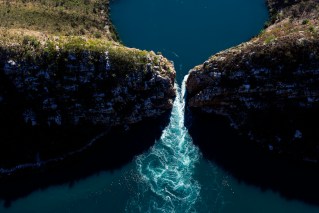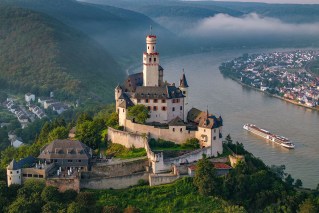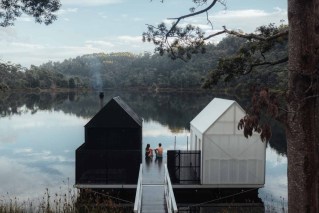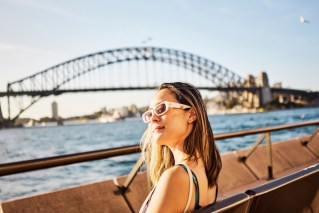Beyond Uluru: Other places where tourists are asked to respect Indigenous culture

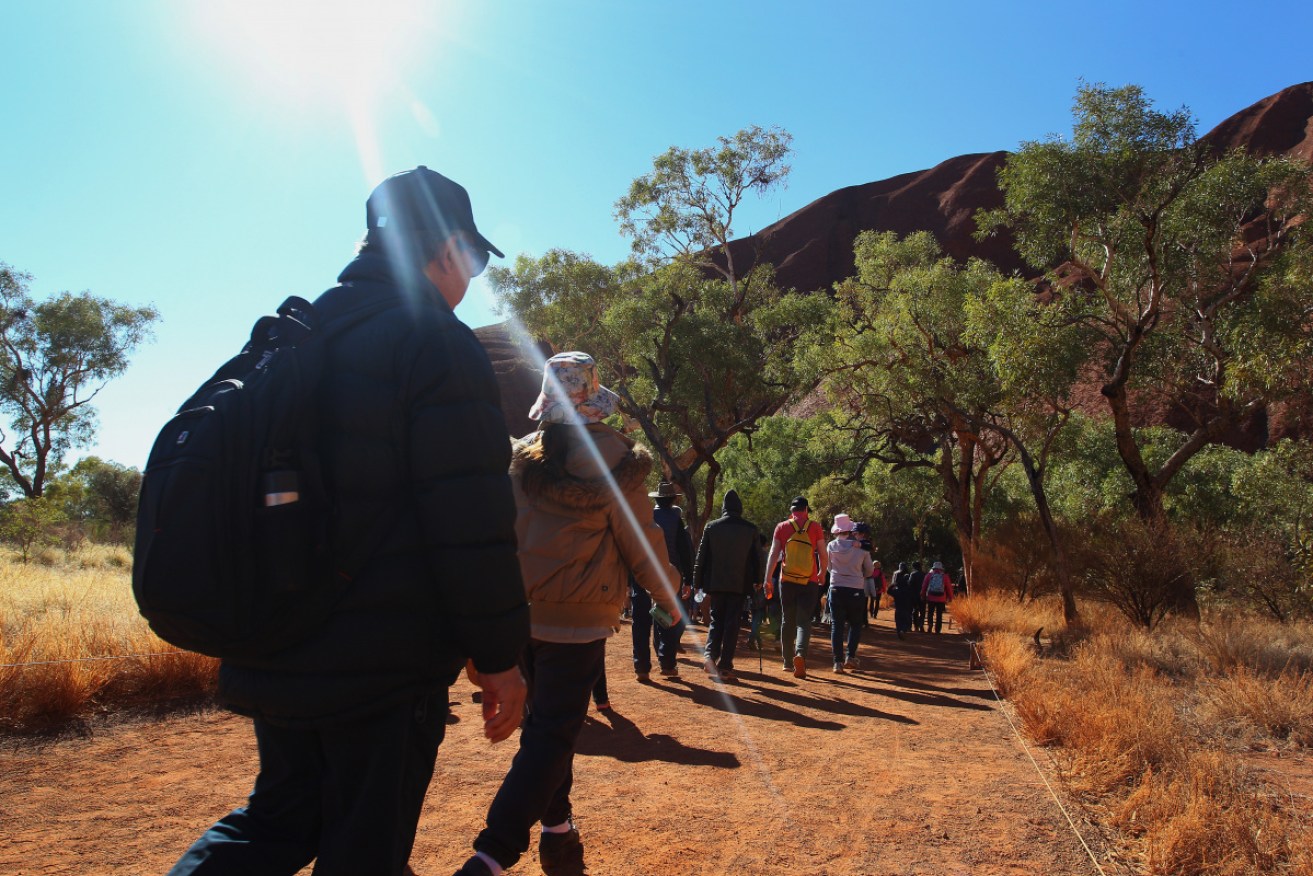
For years, tourists have been asked not to climb Uluru for cultural and safety reasons. Photo: Getty
Well-publicised pleas from traditional owners to stay off Uluru help to ensure that more than 80 per cent of tourists stick to selfies and champagne at the base of the sacred rock.
While Uluru tourism will change in October when a ban on climbing the monolith takes effect, there remain many locations across the country attracting crowds despite calls from local Indigenous people to stay away.
Wollumbin, NSW
Also known as Mount Warning, Wollumbin is one of the most popular walks in northern NSW.
The 8.8-kilometre hike is particularly popular at sunrise, meaning many people may miss the sign from local custodians asking visitors to reconsider their climb out of respect for its spiritual significance.
A spokesperson for the Wollumbin Consultative Group said the mountain was considered a sacred place of lore to the local Bundjalung people.
“Only selected men could go onto the mountain for higher level initiation. It is a dangerous spiritual place for women.”
So rather than stand atop Wollumbin (arguably the most defining feature in the Tweed Range), watch the sunrise across its stunning silhouette from the Best Of All lookout in Springbrook National Park.
The stroll is much shorter – so you can sleep in that little bit longer.
If you’re keen for a physical challenge, you can always double up with a hike down to the nearby Purling Brook Falls for a picnic once the sun is up.

The view at Best of All Lookout across from Mount Warning. Photo: ABC
The Blue Hole, Queensland
The Blue Hole is a popular swimming spot in the Daintree rainforest north of Cairns.
It’s also a significant women’s place for the Kuku Yalanji people – men are not allowed to visit, and women must be invited to the area.
Like Wollumbin, a sign at the start of the access track advises visitors that traditional owners prefer they do not swim in the pool.
Instead, take a guided Dreamtime walk of the Mossman Gorge; visitors learn about local stories, visit traditional bark shelters and experience a smoking ceremony.
There are also several self-guided walks through the national park, including croc-free places to take a dip and cool off.

Give the cultural significant Blue Hole a miss, and take a dip at Mossman Gorge instead. Photo: ABC
St Mary Peak, South Australia
At 1168 metres, St Mary Peak is the highest point of the Flinders Ranges and the final leg of the popular Wilpena Pound circuit.
The peak is also central to the Adnyamathanha creation story.
“St Mary Peak is a part of our Muda, which is our creation story of the pound,” traditional owner Rehanna Coulthard said.
“Two serpents came down here and ate a lot of our ancestors. St Mary Peak is actually the head of one of the serpents.
“It is quite saddening [when visitors climb the peak], because when we go to other countries and visit places and they say, ‘You can’t climb the Taj Mahal’, or, ‘You can’t go and pick a piece out of the Sistine Chapel’, we respect that.
“We hope our visitors do come here, go as far as the Tanderra saddle, but just not climb the peak of St Mary, because it is quite a sacred site for Adnyamathanha people.”
Tanderra Saddle may be the final stop before summiting St Mary Peak, but it still offers similar sweeping views into Wilpena Pound and across the surrounding ranges while being considerate of the custodians’ wishes.

Stop short of St Mary Peak and take in the view of Wilpena Pound from Tanderra Saddle. Photo: ABC
Biamanga Cultural Area, NSW
Unlike other sites on this list, Biamanga Cultural Area need not be avoided altogether.
Its custodial owners ask that visitors refrain from swimming in Mumbulla Falls – which is similar to visiting Uluru without climbing it.
For the Yuin people, this site is sacred.
“It’s significantly a men’s place,” said Bunja Smith, chairperson of the Biamanga National Park board of management.
“It’s right in close to Mumbulla mountain, which was the traditional initiation grounds for the men. It holds great spiritual connection and is a special place for men.
“Without sounding negative, people have been violating the spirituality of it for years by swimming there.
“I guess in their defence, I can’t definitely say they’ve been educated about the spiritual connection and therefore weren’t given the choice to honour that by not swimming there.”
An hour south, you’ll find the beautiful Bournda Lagoon – a perfect waterhole for swimming, fishing and wildlife spotting.
Keep an eye out for eagles overhead and kangaroos on the banks.

Fish, swim and kayak to your heart’s content at Bournda Lagoon. Photo: ABC
Kalkajaka, Queensland
Known as Australia’s very own Bermuda Triangle due to stories of people and livestock disappearing, Kalkajaka (Black Mountain) is considered a no-go zone by traditional owner groups.
In local Indigenous history, Kalkajaka was a sacred battlefield and some now believe it has a dark force.
“For me, it’s a sacred site and no-one is allowed to go to that area,” said local Kuku Nyungkal woman Aunty Marie Shipton.
“If they do, they will get very, very sick.
“I feel bad about it … they’re heading straight into bad vibes there.”
Instead, visitors could make the three-kilometre trek up Mount Cook, which overlooks Cooktown and its picturesque coastline, including the Great Barrier Reef.
Be sure to keep an eye out for monitors, amethystine pythons and quolls.

Skip Kalkajaka and trek up Mount Cook instead. Photo: ABC
Indigenous footprints everywhere
This list is by no means exhaustive, but it’s a good place to start if you’re keen to explore Australia in a culturally sensitive way.
In her book Welcome to Country: A Travel Guide to Indigenous Australia, Marcia Langton offers an extensive guidebook for respectfully travelling Indigenous Australia.
“The Indigenous footprint can be found across the Australian continent and its islands, but it is often invisible until it is pointed out. Once you see the evidence of Aboriginal life, a whole new world opens up.”
Professor Langton notes that traditional owners make ideal travel guides, given their extensive and historical knowledge of the country.
By joining an Indigenous-run tour or enlisting an Indigenous guide, travellers will also be giving back to communities where there may be few opportunities for work.
It will also help invest in the preservation of the world’s oldest living culture.
Websites for state national parks often note if areas are culturally significant, as well as any wishes local custodians may have about your time spent in an area.
